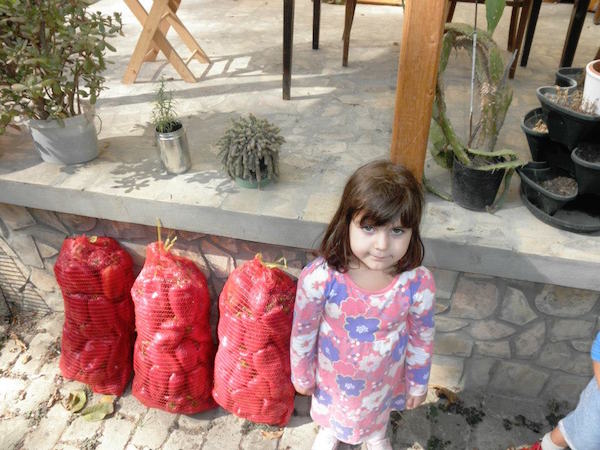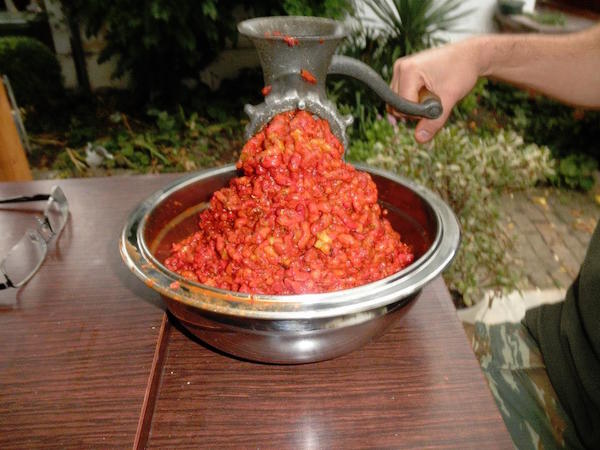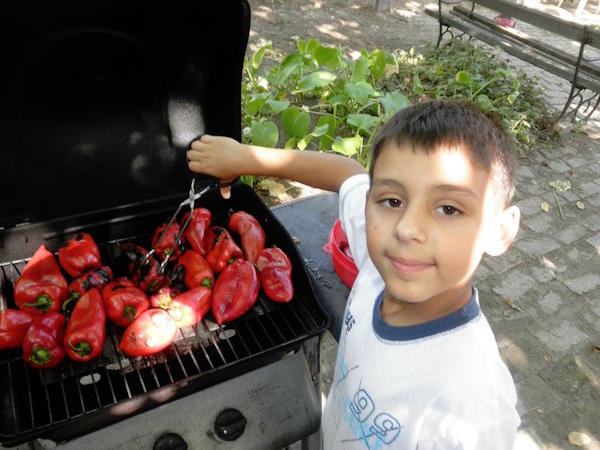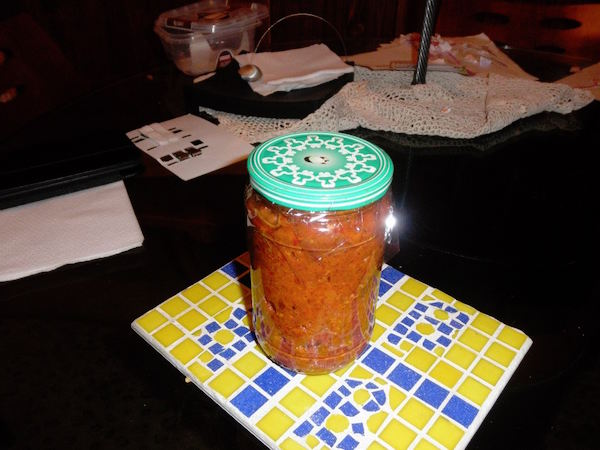The Joys of “Avjar”: Culinary Memory Lane
“My kids helped out, when not goofing off in the garden. We cleaned each pepper thoroughly, and then pulled out the barbecue for the grilling. Given the size of our grill, this process took several hours, with breaks for a large lunch of Greek salad, grilled pork chops, last year’s Ajvar, and liberal draughts of rakija (a strong Serbian spirit) for me.”—Alexander Billinis
Roaming East Roman
By Alexander Billinis

CHICAGO Illinois—(Weekly Hubris)—11/30/2015—One of the great joys of life in the Balkans is the preparation and enjoyment of foods and spirits laden with flavor and culture. The boiling pots, the kitchen gardens groaning with ripe fruits and vegetables, the smell of Vojvodina soup on a cold winter Sunday are pleasures that remain ensconced in my memory. Serbia—and Greece—have amazingly rich cuisines whose fullest, mouth-watering flavors just do not cross the Atlantic. You have to be there, where the raw ingredients burst up from the indigenous soils, to enjoy them to the fullest.
And so it is with Ajvar, the roasted pepper spread beloved throughout the former Yugoslavia, as well as parts of Bulgaria and Greece. While widely produced and enjoyed throughout the Balkans, Ajvar’s true “center of gravity” is in Macedonia (FYROM and Greek Macedonia).
With all this in mind, I wanted my family’s Ajvar to be based on the Macedonian tradition, and I was very much in luck: my daughter’s godmother is from Skopje, and I have tasted her Macedonian Ajvar and found it the best version among very strong contenders.
Now, to duplicate it!
First came the painstaking preparation. So, permit me, now, a walk down memory lane . . . .
Near Sombor, where we lived before relocating to Chicago, lies the village of Ruski Krstur, famous in this part of Vojvodina for its red peppers. At Sombor’s open market, I carefully selected four sacks of red peppers from Ruski Krstur, weighing in at ten kilos per sack. Each sack was nearly the size of my then three-year-old daughter.

After we got home with our bounty, my kids helped out, when not goofing off in the garden. We cleaned each pepper thoroughly, and then pulled out the barbecue for the grilling. Given the size of our grill, this process took several hours, with breaks for a large lunch of Greek salad, grilled pork chops, last year’s Ajvar, and liberal draughts of rakija (a strong Serbian spirit) for me.
The peppers, duly roasted, spent the night in a sealed container the better to loosen the pepper flesh from the skins. The next day, we peeled off the skins, removed the seeds to the degree possible (the most tedious part of the whole process), and then left the meso (meat) of the peppers to drain further.
The juice from the peppers I mix with a bit of Greek Mavrodaphne wine, which is sweet, and then add a little vinegar, oregano, and olive oil courtesy of my Greek koumbaro (brother-in-law) for an amazing salad dressing, but I digress.

The day following, we put the peppers into a grinder. Some people also grind in roasted eggplant, but the proportion of eggplant should be no greater than 10 percent of the amount of peppers; ideally, more in the neighborhood of 5 percent. For our Ajvar, we roasted six fairly large eggplants. We then thoroughly mixed this pepper/aubergine concoction, removing (again, to the degree possible) all still-lingering seeds.
We then cooked the mix, about 20 kilos in weight, in a very large pot for about 30 minutes; stirring constantly. As a Greek, I naturally assumed we would add in olive oil, but our Kuma’s (godmother’s) recipe called for sunflower oil, so we stuck with that. After half an hour of cooking, we added about one liter of oil to the mix, and cooked again for another 2-plus hours, stirring constantly.
Making Ajvar is an endurance sport, it turns out.
When the Ajvar has cooked for about 2 hours, thoroughly washed jars are placed in an oven for heating/sterilization. As the cooking nears completion, you add salt according to taste. Still hot Ajvar is then decanted into the hot jars, which are sealed and turned over for about five to ten minutes. Then the jars are placed together and covered with old blankets to insulate them.
We left them in this state for about two days, after which the jars were lined up and dated, to await consumption.
As fall faded to winter, we opened our first jar, just as the weather really started to bite. Fresh bread from the bakery spread with Ajvar makes for a great and healthy start to a winter day, whether you find yourself in Serbia or Chicago. And there is a special satisfaction and comfort that comes from eating something made with great effort and love.


